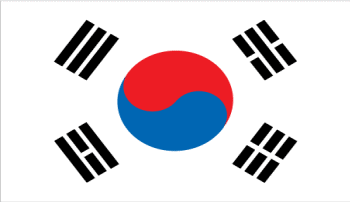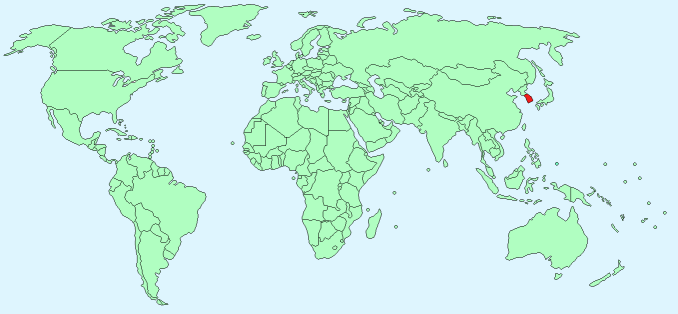South Korea


Continent – Asia
Region – Eastern Asia
Size – 99,720 km²
Geography – mountains and hills with valleys and coastal plains
Language – Korean, English
Religion – Buddhist 24.2%, Protestant 24%, Roman Catholic 7.6%, None 44.4%
Monetary Unit – South Korean won
Natural Resources – coal, tungsten, graphite, molybdenum, lead, hydropower
Agriculture – rice, root crops, barley, vegetables, fruit; cattle, pigs, chickens, milk, eggs, fish
Industry – electronics, telecommunications, automobile production, chemicals, shipbuilding, steel

Neighbouring Countries – North Korea
Population – 49,039,986 (2014 estimate)
Population Growth Rate – 0.16%
Average Life Expectancy – 79.8
Capital City – Seoul (9,736,0000)
Highest Mountain – Halla-San (1,950m)
Longest River – Naktong (521km)
Climate – temperate – cold winters -5°C to 4°C and warm summers 25°C to 27°C
Yearly Rainfall – 120 cm (approx) mostly from April to September
Plant Life – broad leafed trees and shrubs, Korean fir, Korean Bellflower Campanula
Animal Life – bears, wild boar, deer, lynx, roe deer, shrew, weasel, bats, field mouse, hamster
Bird Life – water fowl, cranes, herons
Harvard Reference for this page:
Heather Y Wheeler. (2015). South Korea. Available: https://www.naturalhistoryonthenet.com/Facts_Figures/Country_Facts/south_korea.htm. Last accessed Monday, July 18, 2016
Facts and Figures Pages
